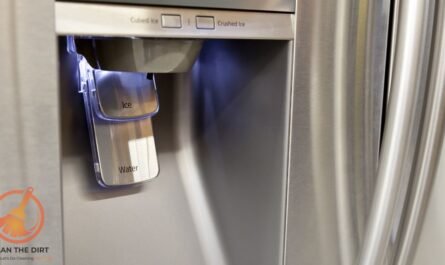Table of Contents
Introduction
Welcome to the ultimate guide on how to clean gas stove top grates. Maintaining a spotless kitchen could sometimes seem overwhelming if you’re like most busy people. Nonetheless, keeping your kitchen spotless and sanitary is crucial for the longevity and effectiveness of your appliances and ensuring your food’s safety.
Gas stove top grates are an integral part of your kitchen, providing support for your pots and pans during cooking. Over time, these grates can accumulate grease, food residue, and stubborn stains, affecting both the appearance of your stove and the quality of your cooking. But fear not. With the right techniques and a little elbow grease, you can restore your gas stove top grates to their former glory and ensure optimal performance for years to come.
In this comprehensive guide on how to clean stove burners, we’ll walk you through various methods for cleaning gas stove top grates, from quick and easy maintenance tips to deep cleaning solutions for stubborn buildup. Whether you’re dealing with everyday collapses or attacking years of problems, we’ve got you covered.
So roll up your sleeves, put on your cleaning apron, and let’s dive into the wonderful world of how to clean gas stove top grates.
Quick Cleaning Tips
Keeping your gas stove top grates clean doesn’t have to be a difficult task. With these quick and easy tips on how to clean gas stove top grates, you can maintain a sparkling kitchen in no time.
1. Daily Wipe-downs
After each use, give your gas stove top grates a quick wipe with a damp cloth or sponge. This helps remove any fresh spills or splatters before they have a chance to harden and become difficult to clean later on.

2. Soapy Soak
For stubborn stains or grease buildup, fill a sink or basin with warm, soapy water and let your grates soak for 15-30 minutes. This will help loosen dirt and grime, making it easier to wipe away.
3. Vinegar Spray
Fill a spray bottle with equal parts of white vinegar and water. Spray the solution onto your gas stove top grates and let it sit for a few minutes before wiping clean with a damp cloth. Vinegar’s acidic properties help break down grease and sanitize surfaces naturally.
4. Baking Soda Paste
Make a paste using baking soda and water, then apply it to stubborn stains or baked-on grease. Let the paste sit for 10-15 minutes before scrubbing with a soft-bristled brush or sponge. Baking soda’s abrasive texture helps lift away tough grime without scratching the surface.
5. Stovetop Cleaner
Invest in a commercial stovetop cleaner specifically designed for gas stove top grates. Follow the manufacturer’s instructions for best results, and always test the cleaner on a small, unnoticeable area first to ensure compatibility.
6. Dry Thoroughly
After cleaning, make sure to dry your gas stove top grates thoroughly to prevent rusting. Use a clean, dry cloth or towel to wipe away any excess moisture before reassembling your stove.
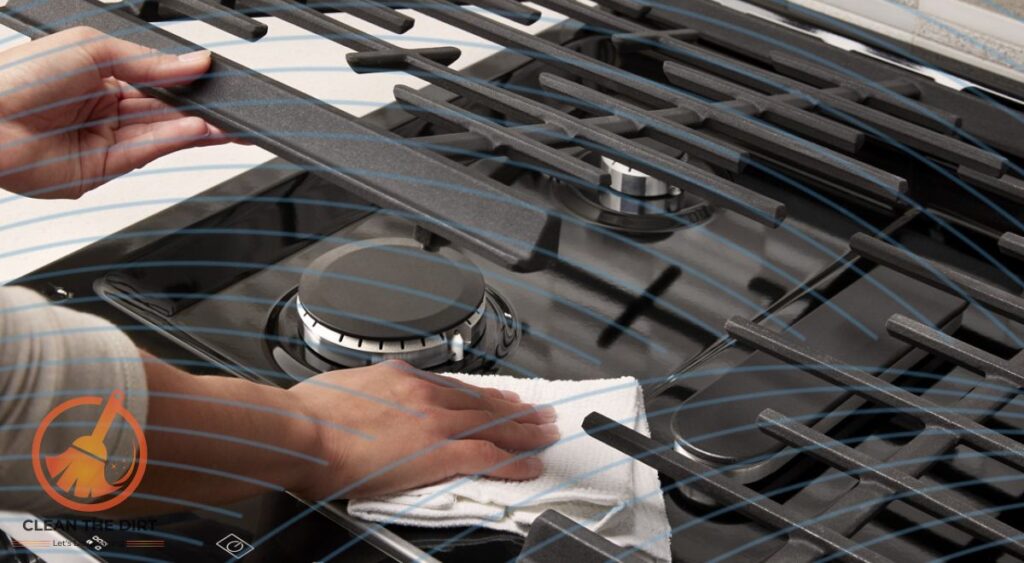
Incorporate these quick cleaning tips on how to clean gas stove top grates into your regular kitchen routine to keep your gas stove top grates looking shiny and new with minimal effort.
How To Clean Gas Stove Top Grates By Deep Cleaning Methods
While quick cleaning tips are great for regular maintenance, sometimes your gas stove top grates need a deeper cleaning to remove stubborn buildup and restore them to their original shine. Here are some effective methods of how to clean gas stove top grates deeply.
1. Boiling Water Soak
Fill a large pot or sink with water and bring it to a boil. Carefully put your gas stove top grates in the boiling water and let them soak for 30 minutes to an hour. The heat helps to loosen grease and food residue, making it easier to scrub away.
2. Ammonia Fumes
Place your gas stove top grates in a large plastic bag or bin with a small bowl of household ammonia. Seal the bag tightly and let it sit overnight in a well-ventilated area. The ammonia fumes will help break down tough stains and grease, allowing you to wipe them away with ease the next day.
3. Oven Cleaner Spray
For baked-on grime, spray your gas stove top grates with a strong oven cleaner. Wearing gloves and working in a well-ventilated location are important. Let the cleaner sit for the recommended time, then scrub the grates with a brush or sponge. To get rid of any leftovers, rinse well with water afterward.
4. Degreasing Solution
Mix equal parts water and dish soap with a small amount of white vinegar or lemon juice. Apply the solution to your gas stove top grates and let it sit for 15-20 minutes to loosen grease and dirt. Scrub the grates with a brush or sponge, then rinse thoroughly with water.
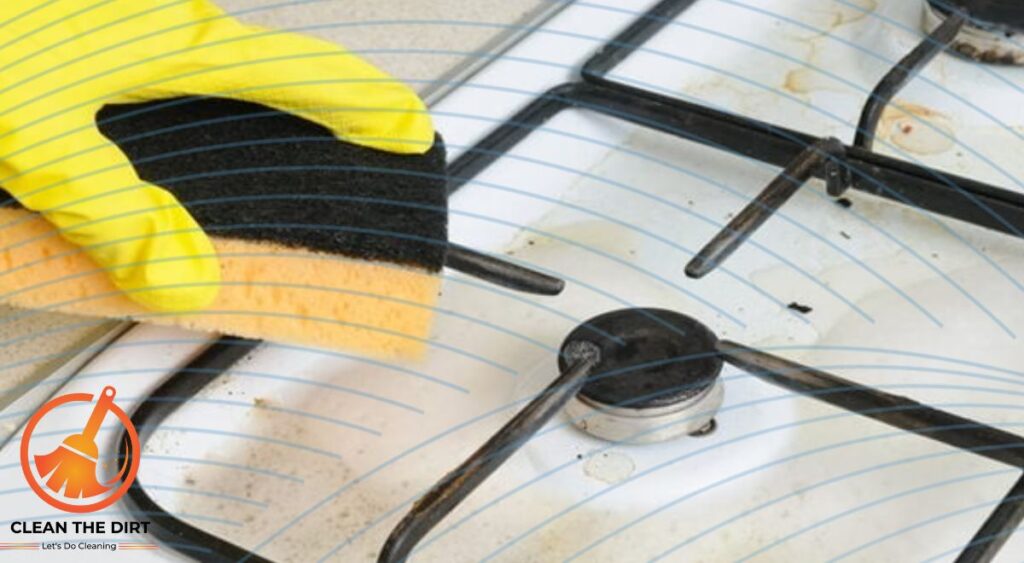
5. Steam Cleaning
If you have a steam cleaner at home, use it to thoroughly remove dirt and grime from your gas stove top grates. The high-pressure steam helps to loosen stubborn formations without the need for harsh chemicals. Just make sure you follow the safety guidelines provided by the manufacturer.
6. Natural Paste
Make a paste out of baking soda and either lemon juice or hydrogen peroxide. Apply the paste to your gas stove top grates and let it sit for 30 minutes to an hour. Scrub the grates with a brush or sponge, then rinse thoroughly with water. Baking soda’s abrasive nature helps to lift away dirt and grease, while hydrogen peroxide or lemon juice adds an extra cleaning boost.
Depending on how dirty your gas stove top grates are and your cleaning preferences, select the most effective cleaning technique. You can successfully follow all the instructions on how to clean gas stove top grates and get a deep clean that makes your grates appear brand new with a little effort and perseverance.
Safety Reminders
While performing the task of how to clean gas stove grates, it’s important to keep safety in mind. Follow these simple reminders to ensure a safe and effective cleaning process.
1. Ventilation
Make sure your kitchen has adequate ventilation before starting any cleaning. Open windows and turn on exhaust fans to allow fresh air to circulate and prevent the accumulation of fumes from cleaning products.
2. Protective Gear
Wear protective gear such as gloves and safety goggles to shield your hands and eyes from harsh chemicals and cleaning solutions. This helps prevent skin irritation and accidental exposure to harmful substances.
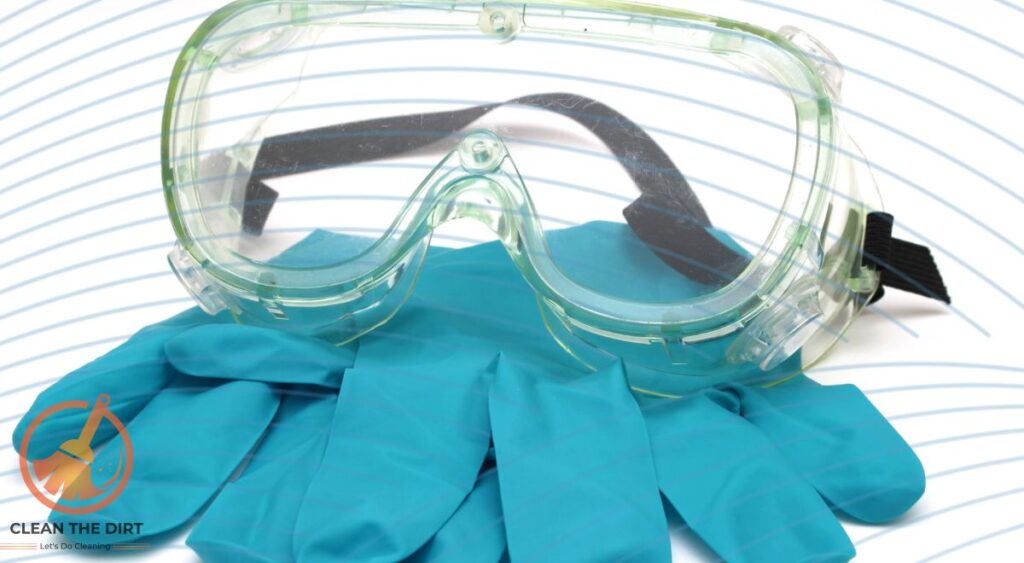
3. Avoiding Burns
Allow your gas stove top grates to cool completely before attempting to clean them. Attempting to clean hot grates can result in burns or injuries. Use caution when handling hot surfaces, and wait until they have cooled to a safe temperature.
4. Read Labels
Always carefully read and follow the directions on cleaning goods. Some cleaners may contain harsh chemicals that can be harmful if not used properly. Use only as directed, and store cleaning products out of reach of children and pets.
5. Test in Small Area
Before applying any cleaning solution to your gas stove top grates, test it in a small, hidden area first to ensure compatibility. This helps prevent damage to the surface and allows you to measure the effectiveness of the cleaner without risking the entire grate.
6. Proper Storage
Store cleaning products in their original containers and in a cool, dry place away from direct sunlight. Keep them out of reach of children and pets to prevent accidental ingestion or exposure.
7. Emergency Preparedness
Keep a first aid kit handy in case of accidental exposure to cleaning chemicals or injury during the cleaning process. Know the location of emergency eyewash stations or showers if working with particularly unsafe substances.
By following this guide on how to clean stove burners, you can ensure a safe and successful cleaning experience for your gas stove top grates.
Maintenance Guide
Proper maintenance is key to ensuring your gas stove top grates remain clean and functional for years to come. Follow these simple steps to keep your kitchen sparkling.
1. Regular Wipe-downs
After each cooking session, give your gas stove top grates a quick wipe with a damp cloth or sponge. This helps prevent food residue from assembling and becoming difficult to remove later on.
2. Avoid Harsh Cleaners
While it may be attractive to use strong chemicals to meet tough stains, avoid harsh cleaners that can damage the surface of your gas stove top grates. Stick to mild dish soap and water or natural cleaning solutions to ensure longevity.
3. Inspect for Damage
Periodically inspect your gas stove top grates for any signs of damage or deterioration. Look for cracks, chips, or rust spots that may need attention. Addressing issues early can prevent further damage and prolong the life of your grates.
4. Season Cast Iron Grates
If your gas stove top grates are made of cast iron, consider seasoning them regularly to maintain their non-stick properties and prevent rust. Apply a thin layer of vegetable oil and heat the grates in the oven for an hour to create a protective coating.
5. Clean Spills Quickly
Accidents happen, but it’s important to clean up spills quickly to prevent them from staining or damaging your gas stove top grates. Use a mild cleaning solution and a soft cloth to wipe away spills as soon as they occur.
6. Store Properly
When not in use, store your gas stove top grates in a dry, well-ventilated area to prevent moisture formation and rusting. Avoid placing grates on top of each other, as this can cause scratching and damage.
7. Schedule Deep Cleans
While regular maintenance is important, don’t forget to schedule periodic deep cleans for your gas stove top grates. Follow the deep cleaning methods outlined earlier to remove rigidity creation and keep your grates appearance looking like brand new.
By ensuring these simple maintenance tips on how to clean gas stove top grates, you can confirm that your gas stove top grates remain clean, functional, and beautiful for years to come.
Troubleshooting Guide
Encountering issues with your gas stove top grates? Don’t worry, we’ve got you covered. Follow these simple troubleshooting tips to address common problems.
1. Uneven Heating
If you notice uneven heating on your gas stove top grates, it may be due to dirt or debris blocking the burner ports. Turn off the gas supply and allow the grates to cool completely. Use a soft-bristled brush or compressed air to clean out any buildup, then relight the burner to see if the issue resolves.
2. Sticky Residue
Sticky residue on your gas stove top grates can be a result of spilled food or grease. To meet this problem, remove the grates and soak them in warm, soapy water for 30 minutes. Scrub the grates with a sponge or brush to remove any stubborn residue, then rinse thoroughly and allow to dry before reassembling.
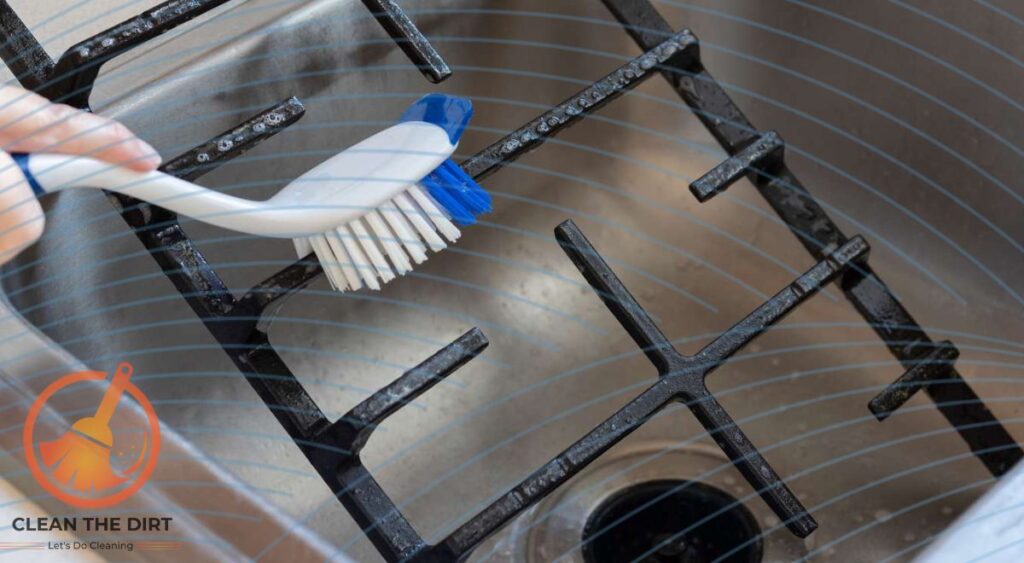
3. Rust Formation
Rust can form on gas stove top grates due to exposure to moisture or acidic foods. To address rust spots, gently scrub the affected areas with a mixture of baking soda and water. Rinse thoroughly and dry completely before applying a thin layer of cooking oil to prevent future rusting.
4. Burner Ignition Issues
If your gas stove top grates are having trouble igniting, check for jams or obstructions in the burner ports. Use a needle or pin to carefully clear any blockages, then try relighting the burner. If the issue persists, consult your stove’s manual or contact a professional for further assistance.
5. Soot Production
Excessive soot production on your gas stove top grates can indicate a problem with the air-to-gas ratio. Check the burner assembly for proper alignment and cleanliness, and ensure that the air shutter is adjusted correctly. If necessary, consult a technician to recalibrate the burner for optimal performance and follow the technician’s instructions on how to clean gas stove top grates.
6. Flame Irregularities
If you notice irregular flames or yellowing on your gas stove top grates, it could be a sign of incomplete combustion. Check for obstructions in the burner ports and adjust the air shutter as needed to achieve a clean, blue flame. For additional diagnostic and repair if the problem continues, get in touch with an expert.
By following these troubleshooting tips, you can address common issues with your gas stove top grates and ensure they continue to function properly for many years to come.
Conclusion
Congratulations on completing your journey to learn how to clean gas stove top grates like a pro. With the tips and techniques provided in this guide, you’re well-equipped to control grime and keep your kitchen shining.
Remember, regular maintenance is the key to maintaining the beauty and functionality of your gas stove top grates. By incorporating simple cleaning routines of how to clean gas stove top grates into your kitchen habits, you can prevent stubborn buildup and ensure your grates stay in top condition for multiple years.
Let’s have a look on the pros and cons table for cleaning methods suitable for cleaning gas stove top grates.
| Cleaning Method | Pros | Cons |
|---|---|---|
| Baking Soda and Vinegar | Effective at removing grease and grime | Requires soaking time for best results |
| Dish Soap and Water | Easy to access ingredients | May require scrubbing for tougher stains |
| Commercial Degreasers | Powerful cleaning agents | Often contain harsh chemicals |
| Lemon Juice and Baking Soda | Natural ingredients | May not be as effective as commercial degreasers |
Whether you’re using natural remedies like baking soda and vinegar or choosing commercial cleaners, always prioritize safety and follow manufacturer recommendations. With a little care and attention, your gas stove top grates will continue to serve you well through countless meals and cooking adventures.
Thank you for joining us on this journey of how to clean gas stove top grates and happier kitchens. Here’s to many more delicious meals cooked on your sparkling gas stove top grates.
Frequently Asked Questions (FAQs)
How often should I clean my gas stove top grates?
It’s a good idea to wipe down your gas stove top grates after each use to prevent the buildup of unnecessary materials. For a deeper clean, aim to clean them thoroughly at least once a month, or more frequently if you cook often.
Can I use abrasive cleaners on my gas stove top grates?
It’s best to avoid abrasive cleaners, as they can damage the surface of your grates. Stick to mild dish soap and water, or natural cleaning solutions like baking soda and vinegar.
What’s the best way to remove stubborn stains from my grates?
For stubborn stains, try soaking your grates in warm, soapy water or using a paste made from baking soda and water. You can also use a commercial stove top cleaner, following the manufacturer’s instructions carefully.
How do I prevent rust from forming on my gas stove top grates?
To prevent rust, make sure to dry your grates thoroughly after cleaning. You can also season cast iron grates with vegetable oil to create a protective coating.
Can I put my gas stove top grates in the dishwasher?
It’s generally not recommended to put gas stove top grates in the dishwasher, as the heat and detergent can cause damage. Instead, hand wash them with mild dish soap and water.
Is it safe to use ammonia or oven cleaner on my grates?
While some people use ammonia or oven cleaner for deep cleaning, it’s important to use caution and follow safety guidelines. Make sure to rinse the grates thoroughly afterward to remove any residue.
How do I know if my gas stove top grates need to be replaced?
If your grates are cracked, chipped, or heavily rusted, it may be time to replace them. Additionally, if they’re no longer sitting level or are affecting the performance of your stove, it’s worth considering a replacement.
You May Also Like: How to Clean Airpod Microphone? A Step-by-Step Guide for Crystal Clear Sound


